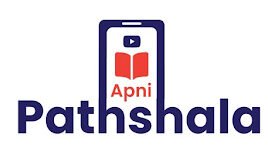|
Tags:
For Prelims: Pradhan Mantri Janjatiya Unnat Gram Abhiyan (PMJUGA), Tribal Communities, Development Action Plan for Scheduled Tribes (DAPST), Poshan Abhiyan, Forest Rights Act, 2006 (FRA), Immunization, Swadesh Darshan scheme. For Mains: Government policies & interventions for the welfare of tribal communities. |
Why in News?
Recently, the Union Cabinet approved the Pradhan Mantri Janjatiya Unnat Gram Abhiyan (PMJUGA) to enhance the socio-economic conditions of tribal communities.
Key Facts About PMJUGA
Overview: PMJUGA is a centrally sponsored initiative aimed at improving the welfare of tribal families in tribal-majority villages and aspirational districts.
Target Areas and Coverage: The program will encompass 549 districts and 2,740 blocks across all tribal-majority villages in 30 states and UTs, impacting approximately 63,000 villages and benefiting over 5 crore tribal individuals. According to the 2011 Census, India’s Scheduled Tribe (ST) population stands at 10.42 crore (8.6%), consisting of more than 705 tribal communities.
Objective: The initiative aims to address critical gaps in social infrastructure, including health, education, and livelihood, by leveraging various government schemes through convergence and outreach.
Mission Goals: The program consists of 25 interventions to be implemented by 17 ministries, funded through the Development Action Plan for Scheduled Tribes (DAPST) over the next five years to achieve the following:
- Developing Enabling Infrastructure:
- Access to pucca housing under the PMAY (Rural) for eligible ST households, along with tapped water (Jal Jeevan Mission) and electricity supply. Eligible households will also have access to the Ayushman Bharat Card (PMJAY).
- Improving village infrastructure, ensuring all-weather road connectivity to ST-majority villages (PMGSY), and enhancing access to mobile connectivity (Bharat Net) and internet services, as well as health, nutrition, and education infrastructure (National Health Mission, Samagra Shiksha, Poshan Abhiyan).
- Promoting Economic Empowerment: Focus on skill development, entrepreneurship promotion, and livelihood enhancement (self-employment) by providing access to training (Skill India Mission), marketing support from the Tribal Multipurpose Marketing Centre (TMMC), and assistance in agriculture, animal husbandry, and fishery sectors for FRA patta holders.
- Universal Access to Quality Education: Efforts will be made to increase the Gross Enrollment Ratio (GER) in schools and higher education, making quality education affordable and accessible to ST students (Samagra Shiksha Abhiyan) by establishing tribal hostels in schools at the district/block level.
- Promoting Healthy Lives and Dignified Aging: Aiming to achieve national standards in Infant Mortality Rate (IMR), Maternal Mortality Rate (MMR), and immunization coverage through Mobile Medical Units in areas where the sub-center is over 10 km in plain regions and 5 km in hilly areas.
Mapping and Monitoring: Tribal villages involved in the mission will be mapped on the PM Gati Shakti Portal, identifying gaps as per the requirements of specific schemes. The best-performing districts will receive recognition.
Note:
The DAPST serves as a strategy for tribal development in India, with the Ministry of Tribal Affairs and 41 other ministries allocating funds to various tribal development projects, including education, health, agriculture, and housing.
Innovative Schemes to Promote Livelihood among Tribals under PMJUGA:
Tribal Home Stay: To encourage tourism in tribal regions and provide alternative livelihoods, the Ministry of Tourism will promote 1,000 homestays under the Swadesh Darshan scheme. Villages with tourism potential will receive funding for 5-10 homestays, with each household eligible for up to Rs 5 lakh to build two new rooms, Rs 3 lakh for renovations, and Rs 5 lakh for community needs.
Sustainable Livelihood for Forest Right Holders: The mission focuses on 22 lakh FRA patta holders in forest areas, expediting the recognition of forest rights and providing sustainable livelihoods through various government schemes.
Enhancing Infrastructure of Government Residential Schools and Hostels: The initiative aims to improve the infrastructure of tribal residential schools, hostels, and ashram schools to enhance local educational resources and promote student retention.
Advanced Facilities for Diagnosis of Sickle Cell Disease: Centres of Competence (CoC) will be established in AIIMS and premier institutes in states where Sickle Cell Disease is prevalent, equipped with advanced facilities for prenatal diagnosis, at a cost of Rs 6 crore per CoC.
Tribal Multipurpose Marketing Centres (TMMCs): 100 TMMCs will be set up to improve marketing infrastructure and raise awareness, branding, packaging, and transportation facilities for tribal products.
Need for PMJUGA
Poverty: Tribal communities frequently face poverty and limited access to resources. The Planning Commission estimated that 45.3% of ST individuals lived below the poverty line in rural areas (2011-12). PMJUGA will establish Skilling Centers in tribal districts to generate employment and reduce poverty.
Land Rights and Displacement: Many tribal communities encounter displacement due to development projects and deforestation. PMJUGA aims to issue 22 lakh FRA pattas under the Scheduled Tribes and Other Traditional Forest Dwellers (Recognition of Forest Rights) Act, 2006, recognizing their land rights.
Low Literacy Rate: Literacy rates among tribal populations are significantly lower than the national average. According to the 2011 Census, the literacy rate of STs was 59% compared to the national average of 73%. The initiative will construct 1,000 hostels under the Samagra Shiksha Abhiyan (SSA) for affordable education.
Health Issues: The National Family Health Survey (NFHS-5) 2019-21 reports high rates of stunting, wasting, and underweight among tribal children. Additionally, a high incidence of Sickle Cell Disease (SCD) is present in tribal populations. The Ministry of Health will provide Mobile Medical Units under the National Health Mission.
Cultural Erosion and Identity: Many tribal communities face challenges in preserving their cultural practices amid rapid urbanization and globalization. Under the Pradhan Mantri Adi Adarsh Gram Yojana, model villages will be established to preserve cultural identity.
Lack of Awareness of Government Schemes: Many tribal individuals remain unaware of benefits like BPL cards, ration cards, and job cards for employment schemes. The Ministry of Electronics & Information Technology will promote Digital India initiatives to enhance awareness.
Other Government Initiatives for Scheduled Tribes
- PM-Janjati Adivasi Nyaya Maha Abhiyan (PM-JANMAN) Scheme
- TRIFED
- Digital Transformation of Tribal Schools
- Development of Particularly Vulnerable Tribal Groups
- Pradhan Mantri Van Dhan Yojana
- Eklavya Model Residential Schools
Conclusion
The Pradhan Mantri Janjatiya Unnat Gram Abhiyan (PMJUGA) seeks to uplift tribal communities through sustainable development by enhancing infrastructure, livelihoods, and access to services. By promoting skill development and self-sufficiency, it aims to improve education, healthcare, and overall quality of life, bridging the development gap and empowering tribal voices in India.
UPSC Civil Services Examination Previous Year Questions (PYQ)
Prelims
Q. Under which Schedule of the Constitution of India can the transfer of tribal land to private parties for mining be declared null and void? (2019)
- (a) Third Schedule
- (b) Fifth Schedule
- (c) Ninth Schedule
- (d) Twelfth Schedule
Ans: (b)
- The Government enacted the Panchayat Extension to Scheduled Areas (PESA) Act in 1996. Which of the following is not considered an objective of this Act? (2013)
- (a) To provide self-governance
- (b) To recognize traditional rights
- (c) To create autonomous regions in tribal areas
- (d) To free tribal people from exploitation
Ans: (c)
Mains
Q. How would you interpret the statistics indicating that the sex ratio among tribes in India is more favorable to women than the sex ratio among Scheduled Castes? (2015)
Explore our courses: https://apnipathshala.com/courses/
Explore Our test Series: https://tests.apnipathshala.com/






